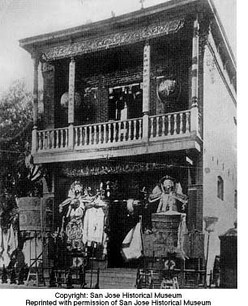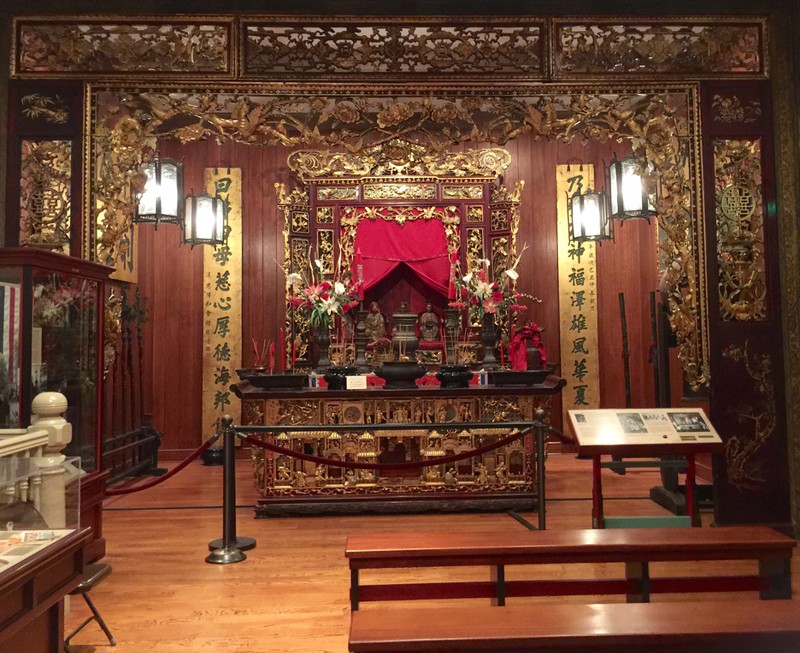Chinese American Historical Museum at the Ng Shing Gung, History Park
Introduction
Text-to-speech Audio
Images
The Chinese American Historical Museum in the historic Ng Shing Gung (image from CAHM)

Ng Shing Gung, Temple of the Five Gods (image from CAHM)

Altar of the Ng Shing Gung, dating to 1892 (image from CAHM)

Backstory and Context
Text-to-speech Audio
The Ng Shing Gung and Heinlenville Chinatown
San Jose's Chinatown changed locations four times between the 1860s and 1931. In 1887, after a fire set by an arsonist destroyed Chinatown at Market Street, German immigrant and businessman John Heinlen offered leases to displaced Chinese businesses and families. He received death threats from the community at large, and initially the 6th Street Chinatown (which became known as Heinlenville) had to be fenced and locked at night to protect the neighborhood, but as the town thrived and the population increased, the area became more secure (1; 2).
The residents pooled their meager resources for the construction of the Ng Shing Gung (Temple of the Five Gods) only one year after their move to Heinlenville. The temple, dedicated to Kwan Yin (Goddess of Mercy), Choi Sun (God of Wealth), Cheng Huan (God of Canton City), Kwan Gung (God of War, Justice, and Loyalty), and Tien Hou (Queen of Heaven), also served as a community center and hostel for travelers with no local family to house them. On the second floor were the carved, gilded altar and statues of the five gods to whom the temple was dedicated. The ground floor community center held classrooms for children's lessons in Chinese calligraphy and literature (2; 3).
A combination of factors worked to end the era of
Heinlenville as a Chinese American community during the 1930s—the Chinese
Exclusion Act prohibited immigration, the younger generations integrated with
American culture and community, and Heinlen lost his fortune during the Great
Depression (1; 2). The neighborhood estate went bankrupt, and the City of San
Jose became the owner of the Heinlenville property. The city razed everything
except Ng Shing Gung, which remained intact until 1949, when over the
objections of local historians, the temple was demolished (2). The original altar,
furnishings, and part of the façade were rescued and later incorporated into
the Ng Shing Gung replica and Chinese American Historical Museum which now
stands in San Jose's History Park segment of Kelly Park (2; 3).
Cite This Entry
Marian, Sara. "Chinese American Historical Museum at the Ng Shing Gung, History Park." Clio: Your Guide to History. January 13, 2017. Accessed August 14, 2025. https://theclio.com/entry/27053

